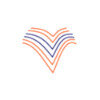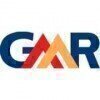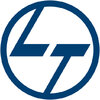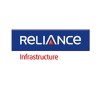Filter interviews by
Oasis Partners Asia Safety Officer Interview Questions and Answers
Oasis Partners Asia Safety Officer Interview Experiences
1 interview found
(3 Questions)
- Q1. Tell us about yourself? What is basic safety rules? What is work permit? Types of fire ?
- Ans.
I am a dedicated Safety Officer with a strong background in implementing safety protocols and ensuring compliance with regulations.
Basic safety rules include wearing appropriate PPE, following proper procedures, and reporting hazards.
A work permit is a document that authorizes a person to perform a specific job or task in a controlled environment.
Types of fire include Class A (ordinary combustibles), Class B (flammable
- Q2. Type of fire extinguisher?
- Ans.
There are different types of fire extinguishers for different types of fires, such as Class A, B, C, D, and K.
Class A fire extinguishers are for ordinary combustibles like wood and paper
Class B fire extinguishers are for flammable liquids like gasoline and oil
Class C fire extinguishers are for electrical fires
Class D fire extinguishers are for combustible metals like magnesium and titanium
Class K fire extinguishers are...
- Q3. Scaffolding work at height?
- Ans.
Scaffolding work at height involves ensuring proper safety measures are in place to prevent falls and injuries.
Ensure scaffolding is properly erected and inspected before use
Provide fall protection equipment for workers
Train workers on safe practices for working at heights
Regularly inspect scaffolding for any damage or defects
Implement a rescue plan in case of emergencies
Interview Preparation Tips
Top trending discussions






Interview questions from similar companies

I applied via Recruitment Consulltant and was interviewed in Oct 2024. There were 2 interview rounds.
(2 Questions)
- Q1. What are precautions of work at height
- Ans.
Precautions for working at height include proper training, use of fall protection equipment, regular inspection of equipment, and securing tools and materials.
Ensure workers are properly trained on working at height procedures
Use appropriate fall protection equipment such as harnesses, lanyards, and guardrails
Regularly inspect all equipment used for working at height to ensure it is in good condition
Secure tools and ma...
- Q2. What are you know about lifting plan.
- Ans.
A lifting plan is a detailed document outlining the procedures and precautions to be taken when lifting heavy objects.
A lifting plan should include the weight of the object being lifted
It should specify the equipment to be used for lifting
The plan should outline the steps to be taken to ensure the safety of workers involved
It should also consider factors such as the location of the lift and any potential hazards
Regular...
(2 Questions)
- Q1. What is risk assessment
- Ans.
Risk assessment is the process of identifying, analyzing, and evaluating potential risks in order to determine the likelihood and impact of harmful events.
Identifying potential hazards and risks in the workplace or environment
Analyzing the likelihood of these risks occurring
Evaluating the potential impact of these risks on people, property, and the environment
Developing strategies to mitigate or eliminate these risks
Re...
- Q2. How to calculate capacity of wire rop sling
- Ans.
Capacity of wire rope sling can be calculated by considering factors like diameter, material, and configuration.
Capacity is determined by the breaking strength of the wire rope and the design factor used.
Calculate the breaking strength of the wire rope by multiplying the area of the rope cross-section by the tensile strength of the material.
Consider the configuration of the sling (single leg, double leg, etc.) and appl...

Safety Officer Interview Questions & Answers
Hajee A P Bava Constructionposted on 15 Sep 2024
(2 Questions)
- Q1. Type of work Permit.
- Ans.
Work permits are documents that authorize specific work to be done in a controlled manner to ensure safety.
Work permits are used to control hazardous work activities.
They outline the precautions to be taken before, during, and after the work.
Examples include hot work permits, confined space entry permits, and electrical work permits.
- Q2. Safe hours of Manpower furmula.

Safety Officer Interview Questions & Answers
Megha Engineering & Infrastructuresposted on 25 Jun 2024
(2 Questions)
- Q1. What is HIRA and how to prepare it
- Ans.
HIRA stands for Hazard Identification and Risk Assessment. It is a systematic process to identify potential hazards and assess the associated risks.
Identify all potential hazards in the workplace or task
Assess the likelihood and severity of each hazard
Determine the level of risk for each hazard
Implement control measures to mitigate or eliminate the risks
Regularly review and update the HIRA as needed
- Q2. What is JSA and its purposes
- Ans.
JSA stands for Job Safety Analysis. It is a process used to identify and control hazards in the workplace.
JSA involves breaking down a job into its individual tasks and identifying potential hazards associated with each task.
The purpose of JSA is to prevent accidents and injuries by proactively addressing safety risks.
JSA helps in developing safe work procedures and training employees on how to perform tasks safely.
Exa...
HIRA , JSA, MSDS , PTW
Interview Preparation Tips

I applied via Walk-in and was interviewed in May 2024. There was 1 interview round.
(5 Questions)
- Q1. What is responsibility safety officer
- Ans.
Safety officers are responsible for ensuring the safety of employees, visitors, and the workplace environment.
Developing and implementing safety policies and procedures
Conducting regular safety inspections and audits
Providing safety training to employees
Investigating accidents and incidents to determine causes and prevent future occurrences
Ensuring compliance with safety regulations and standards
- Q2. How many types of fire extinguisher
- Ans.
There are five main types of fire extinguishers: water, foam, dry powder, CO2, and wet chemical.
Water fire extinguishers are suitable for Class A fires involving solid materials like wood or paper.
Foam fire extinguishers are effective for Class A and B fires involving flammable liquids like petrol or oil.
Dry powder fire extinguishers are suitable for Class A, B, and C fires involving flammable gases.
CO2 fire extinguish...
- Q3. How many types of permit
- Ans.
There are various types of permits required for different activities in a workplace.
Work Permit - for tasks like hot work, confined space entry, etc.
Electrical Permit - for electrical work like installations, repairs, etc.
Excavation Permit - for digging or excavation work.
Permit to Work at Height - for tasks performed at elevated locations.
Permit to Work with Hazardous Materials - for handling dangerous substances.
Perm...
- Q4. How many types hazard control methods
- Ans.
There are three main types of hazard control methods: engineering controls, administrative controls, and personal protective equipment (PPE).
Engineering controls involve physically changing the workplace to reduce or eliminate hazards, such as installing machine guards or ventilation systems.
Administrative controls focus on changing work practices or policies to minimize exposure to hazards, such as implementing safety...
- Q5. Why important PPE work at site work place
Interview Preparation Tips

I applied via Approached by Company and was interviewed in Jan 2024. There was 1 interview round.
(5 Questions)
- Q1. Weekly walk down related
- Q2. Electrical Installation
- Q3. Documents verification
- Q4. Welfare workman's
- Q5. Environment Management

I applied via LinkedIn and was interviewed in Nov 2022. There were 2 interview rounds.

(2 Questions)
- Q1. Technical related to your education
- Q2. Based on your experience
Interview Preparation Tips

I was interviewed in Dec 2021.
Interview Preparation Tips

Safety Officer Interview Questions & Answers
Hajee A P Bava Constructionposted on 23 Feb 2022
I applied via Job Portal and was interviewed before Feb 2021. There was 1 interview round.
Interview Preparation Tips

Safety Officer Interview Questions & Answers
Megha Engineering & Infrastructuresposted on 23 Aug 2023
I applied via Naukri.com

(5 Questions)
- Q1. How many type of hazard
- Ans.
There are three main types of hazards: physical, chemical, and biological.
Physical hazards include slips, trips, falls, noise, vibration, and extreme temperatures.
Chemical hazards involve exposure to harmful substances like gases, liquids, and dusts.
Biological hazards come from exposure to viruses, bacteria, fungi, and parasites.
- Q2. What is confined space
- Ans.
Confined space is an area that is not designed for continuous occupancy, has limited entry and exit points, and may have poor ventilation.
Confined spaces are typically small and enclosed, making it difficult to enter and exit.
These spaces may contain hazardous substances or conditions that can be harmful to workers.
Examples of confined spaces include storage tanks, silos, tunnels, and sewers.
- Q3. What is hazard of work at height
- Ans.
Working at height poses risks of falls, falling objects, and structural collapses.
Falls from height can result in serious injuries or fatalities
Objects dropped from height can cause harm to workers below
Structural collapses can occur due to improper installation or maintenance
Safety measures such as guardrails, harnesses, and regular inspections are crucial to prevent accidents
- Q4. What is safety in construction
- Ans.
Safety in construction refers to the measures taken to prevent accidents, injuries, and fatalities on construction sites.
Ensuring proper training and supervision of workers
Implementing safety protocols and procedures
Providing personal protective equipment (PPE)
Regular inspections of equipment and work areas
Emergency preparedness and response plans
Examples: Fall protection systems, scaffolding safety measures
- Q5. How many type of fire
- Ans.
There are five main classes of fire: Class A, Class B, Class C, Class D, and Class K.
Class A fires involve ordinary combustible materials such as wood, paper, and cloth.
Class B fires involve flammable liquids like gasoline, oil, and grease.
Class C fires involve energized electrical equipment.
Class D fires involve combustible metals like magnesium, titanium, and sodium.
Class K fires involve cooking oils and fats commonl
Interview Preparation Tips
Oasis Partners Asia Interview FAQs
Tell us how to improve this page.
Oasis Partners Asia Interviews By Designations
- Oasis Partners Asia Civil Engineer Interview Questions
- Oasis Partners Asia Civil Site Engineer Interview Questions
- Oasis Partners Asia Civil Site Supervisor Interview Questions
- Oasis Partners Asia Electrical Technician Interview Questions
- Oasis Partners Asia HR Assistant Interview Questions
- Oasis Partners Asia Safety Officer Interview Questions
- Oasis Partners Asia Safety Steward Interview Questions
- Oasis Partners Asia Site Supervisor Interview Questions
- Show more
Interview Questions for Popular Designations
- Safety Supervisor Interview Questions
- Fire & Safety Officer Interview Questions
- Senior Safety Officer Interview Questions
- Safety Engineer Interview Questions
- Safety Manager Interview Questions
- Drug Safety Associate Interview Questions
- Safety Supervisor, Safety Officer Interview Questions
- Safety Executive Interview Questions
- Show more
Oasis Partners Asia Safety Officer Interview Process
based on 1 interview
Interview experience
Safety Officer Interview Questions from Similar Companies
Oasis Partners Asia Safety Officer Reviews and Ratings
based on 3 reviews
Rating in categories
|
Site Engineer
69
salaries
| ₹1.8 L/yr - ₹4.5 L/yr |
|
Civil Site Engineer
26
salaries
| ₹1.4 L/yr - ₹5.6 L/yr |
|
Electrical Engineer
12
salaries
| ₹2.5 L/yr - ₹4 L/yr |
|
Civil Engineer
10
salaries
| ₹1.8 L/yr - ₹3.2 L/yr |
|
Site Supervisor
9
salaries
| ₹2 L/yr - ₹4 L/yr |

GMR Group

Larsen & Toubro Limited

Reliance Infrastructure

Tata Projects
- Home >
- Interviews >
- Oasis Partners Asia Interview Questions >
- Oasis Partners Asia Safety Officer Interview Questions








